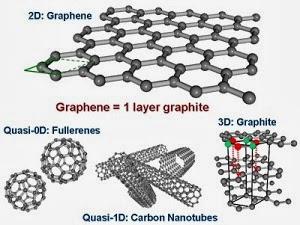 Graphene's environmentally neutral properties makes it an ideal substance for most technological applications. This compound is very inexpensive, extremely conductive, completely transparent, and nontoxic.
Graphene's environmentally neutral properties makes it an ideal substance for most technological applications. This compound is very inexpensive, extremely conductive, completely transparent, and nontoxic.How are scientists exploiting these properties for solar cell technology?
Dr. Marc Gluba and Prof. Dr. Norbert Nickel of the HZB Institute for Silicon Photovoltaics conducted experiments that indicate ways to use graphene in various technological applications which include photovoltaic research without compromising the properties of this substance. Their findings are published in the journal Applied Physics Letters. This is a big deal--as the research shows that graphene can be incorporated in solar cells to conduct electricity without reducing the amount of incoming light--which equals higher efficiency.
 About Graphene:
About Graphene:Graphene is a 2-dimensional network of carbon atoms. These carbon atoms are bound within the plane by strong bonds into a honeycomb array comprised of six-membered rings. The electronic properties of graphene are most interesting which differs extremely from conventional 2D electron gas systems created in semiconductor heterostructures. Graphene has a high charge carrier mobility, for which values of 10.000 cm2/Vs, in some cases even 200.000 cm2/Vs have been reported. Graphene is thus a candidate for high frequency electronic devices. Other applications such as ultrasensitive gas detectors, spintronics, or quantum computing were proposed as well.
Read Research story here -- Image source
